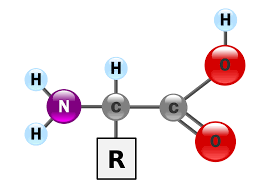As we all know, HPLC should be the most popular approach for amino acid components analysis. However, there are many types of amino acids analysis. In this post, we are going to discuss some common methods.
Detection types
Using UV detection for amino acids in most cases requires by using the absorption of the carboxyl group in the 200 to 210 nm range. In generally, some amino acids are difficult to analyze as-is with sufficient sensitivity and selectivity. Finally, derivatization methods, which include many types, have been used for a long time.
Pre-label method
As for this method, the amino acids are derivertized before injection and then the reaction products are separated and detected. There are some advantages of using this method:
- Reagent consumption rates can be minimized by specifying a small reaction system.
- It allows increasing sensitivity by using more expensive reagents, which offer lower background levels.
- Even if unreacted derivatizing reagent is detected, it will not be a problem as long as it is separated in the column.
Disadvantages of pre-label method:
- Sample matrix will affect derivatization reaction efficiency.
- Reaction products are often unstable and may affect quantitation results.
Post-column reaction detection method
There are some steps in post-column derivatization method, including amino acids separation, derivatizing reagent delivery and mix, which can allow it to react with the amino acids before sending the products to the detector. Some advantages of this method are listed below:
- It can be automated offering excellent quantitative performance and reproducibility.
- Due to the separation of sample components before reaction, reaction efficiency if less prone to sample matrix effects, which enable it to be applied for a wide range of samples.
Disadvantages of post-column derivatization:
- It is not suitable for high-sensitivity analysis.
- Relatively high reagent consumption
- Limited variety of derivatizing reagents will be applied.
- Rapid reversed-phase chromatography can not be used.
These are some information about amino aicds component analysis approaches. Some reference about these approaches are also offered here.
Related services
